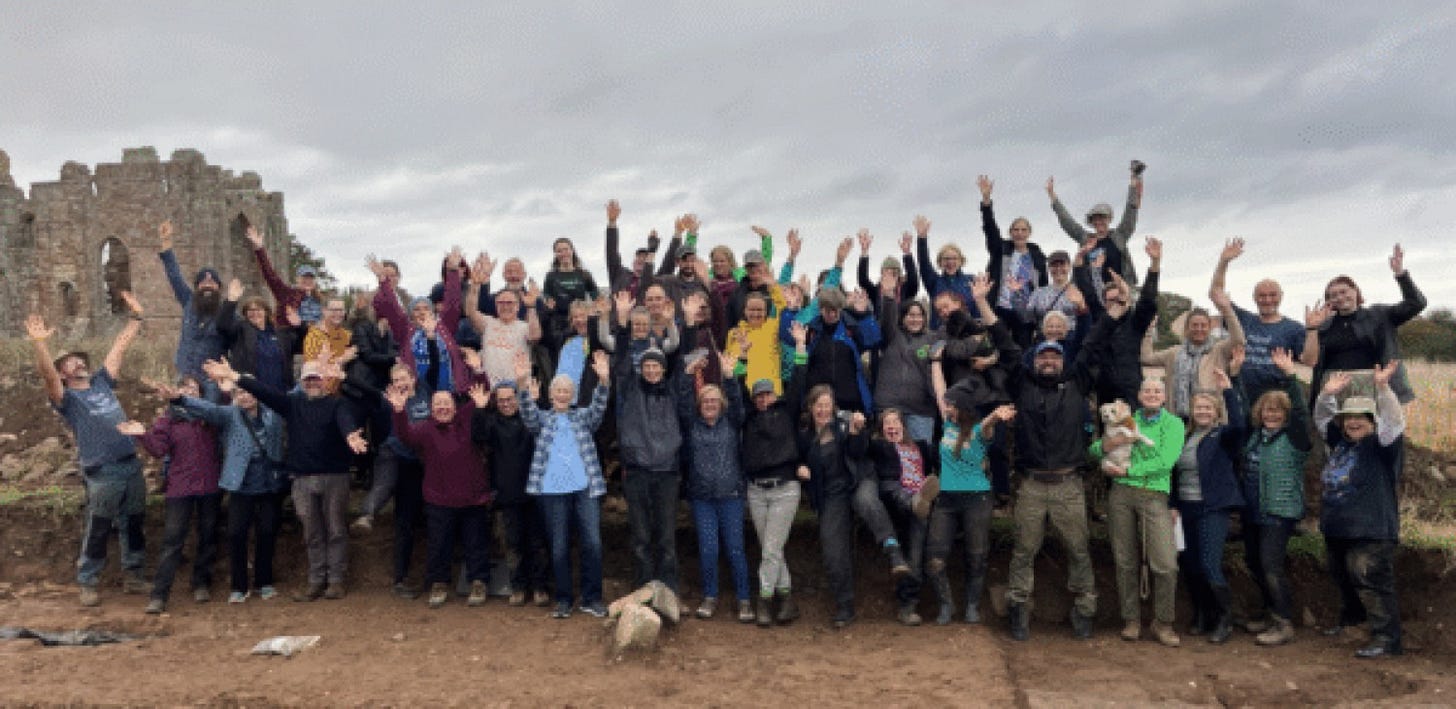Lindisfarne dig uncovers vast early medieval cemetery
Analysis begins on 100 burials revealed during Lindisfarne digs. Tony Henderson reports
Around 100 burials have been uncovered in a decade of digs on Lindisfarne.
This year saw the last of 10 years of excavation seasons on the Northumberland island and now bone analysis will begin at Durham University to discover details of the early medieval population and their lives.
In addition to the 100 burials, the combined university and DigVentures project has resulted in 20,000 fragments of disarticulated remains spanning the 7th–11th centuries.
“Our excavations have revealed that the Lindisfarne cemetery was huge, stretching from the priory ruins down to the edge of the early harbour,” said a DigVentures spokesperson.
“Based on the extent of the cemetery, and where we now think the boundaries were, we estimate that the cemetery may hold around 3,000 individuals.”
While most burials have been left in place, a selected sample have been lifted for conservation and further analysis. There will be respectful reinterment on Lindisfarne of all remains when analysis is complete.
The aims of the analysis are to discover details of:
Travel, migration, and pilgrimage: Did this cemetery include travellers and pilgrims? Do the remains reveal an international community?
Life before and after the Viking raid on Lindisfarne in AD 793: Did the population change over time? Are there significant differences in who was buried and how?
Health and healing: What evidence exists for medical knowledge and healing practices? Was there a common ailment among the population?
Diet and lifestyle: Did living on Lindisfarne influence disease and nutritional levels? Were they well-fed and did inhabitants make the most of their marine resources?
Community and tradition: What can the burials tell about the population’s world views?
The most common grave type on Lindisfarne is the ‘shroud’ burial. Individuals were laid on their backs, facing east–west with their feet toward the sea, with their hands crossed over their lap and ankles drawn close together, showing that their bodies had been carefully wrapped in a shroud.
Some individuals were interred in graves lined with stone slabs, and in some cases, sealed with a large cover stone.
These ‘cist’ burials show a growing investment of time and effort in the burial process and may mark individuals of particular status or significance. One includes small standing stones placed at its four corners.
Three graves feature a layer of charcoal beneath the body – one adult, two juvenile. ‘Charcoal’ burials are rare across early medieval England and typically date from the 6th–8th centuries.
In the Christian beliefs of this period, charcoal and ash symbolised purity, protection and transformation, suggesting these burials may have been intended to purify or safeguard the deceased.
One individual was buried alongside boat timbers. All that survives are the iron rivets known as ‘clench nails’, which are now being analysed in the lab for traces of preserved wood.
Another rare find is where an individual was laid to rest inside a wooden chest with a hinged lid. Only around 20 examples are known from high-status ecclesiastical sites across northern England.
The Lindisfarne example includes the chest lockplate and traces of preserved wood.
Another grave appears to have been a woman, buried with several young children around her, with two more individuals above.
By her head were traces of gold thread, possibly from a headband, a fragment of green porphyry – a precious stone often used for portable altars – and a small paved area above the grave.
Radiocarbon dating places her burial in the 9th century, with the surrounding graves added over the next 100–200 years.
DigVentures use crowd-funding methods to increase opportunities for individuals to take part in excavations and research, and is appealing for donations to help finance the analysis work.




